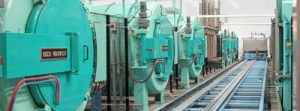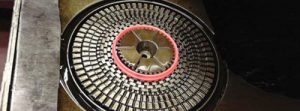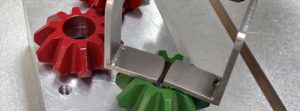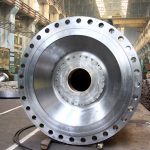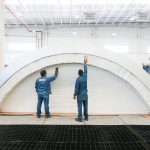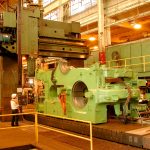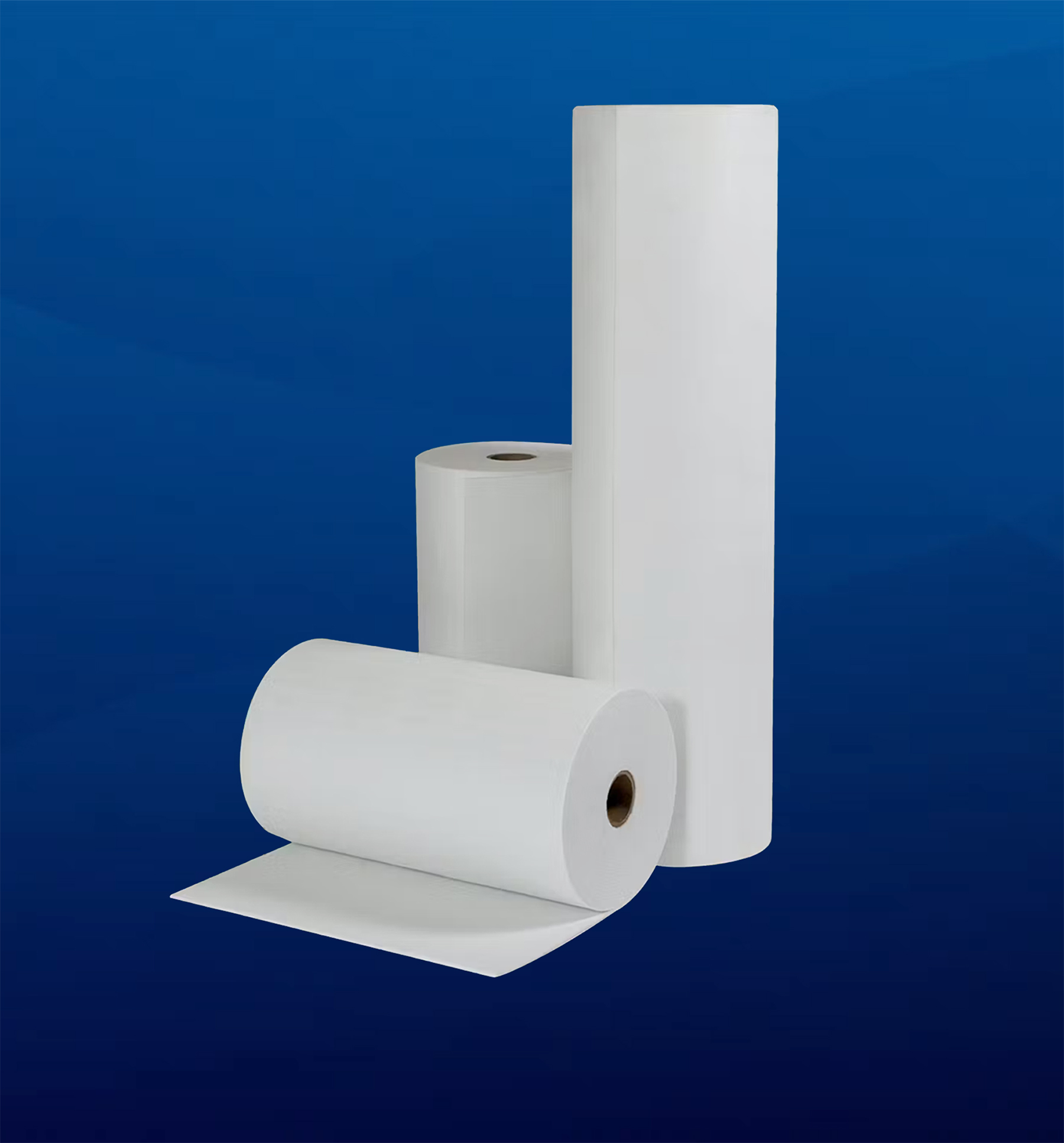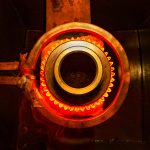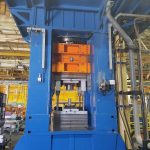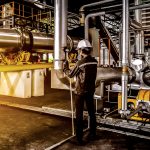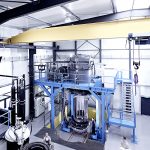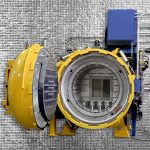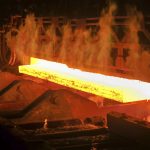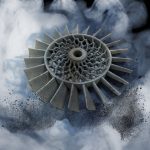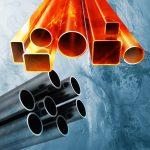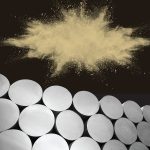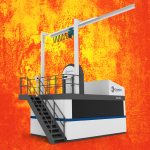The rise of Ag sintering and Cu sintering
With the trend from Si IGBT to SiC MOSFET in electric vehicle (EV) power electronics, the junction temperature is expected to increase from 150°C...
Induction heating in the medical device manufacturing industry
Induction heating is a process that uses electromagnetic fields to heat electrically conductive materials. An induction heating system includes a power supply that converts...
Process gas: Understanding partial pressure and convection heat treating
Designed to pump out atmospheric gases at the beginning of a heat-treating process, while also being capable of introducing process gases to reach specific...
Uncertainty assessment in temperature uniformity survey of equipment according to AMS2750
Thermal processing equipment used in the aerospace industry must meet the requirements of the processes for which they are intended. The periodic tests performed...
Ceramic fiber for industrial furnaces: Optimal thermal performance
In the industrial world, thermal efficiency is crucial for operational success. Maintaining constant and controlled temperatures in manufacturing processes ensures product quality and consistency....
Critical areas in vacuum heat treat furnace preventive maintenance
Vacuum furnaces require regularly scheduled, routine preventative maintenance for three main reasons: First, to ensure planned results are realized after the heat-treating process. Second,...
The role of in-situ techniques in microstructure optimization of interstitially alloyed steels
Microstructure optimization of steel for improved performance requires detailed knowledge of the thermal response of the materials. When designing heat treatments of new materials...
Optimization of the de-bind cycle of sinter-base additive manufactured 17-4 components
Sinter-based additive manufacturing (S-BAM), of which Binder Jet AM (BJAM) is one approach, is quickly becoming recognized as one of the most desirable methods...
Purpose-built forged parts optimized for ‘end use’
When forging seamless rolled rings for diverse sectors such as industrial machinery, pulp and paper, turbines, and oil and gas exploration, it is crucial...
The future of vacuum oil quenching
Despite decades of relentless innovation, the constraints of high-pressure gas quenching have become increasingly evident. Even with the utilization of specialized inert gas blends...
The effect of heat treatment on a 3D-printed PLA polymer’s mechanical properties
Three-dimensional printing is a useful and common process in additive manufacturing. The advantage of additive polymer technology is its rapidity and design freedom. Polymer...
Optimal fabrication of a thin-film thermocouple using Alumel/Chromel junctions
Thin-film thermocouple (TFTC) technology is a novel measurement method that produces a thermocouple sensor during the deposition process, even though it is a complex...
Ceramic fiber: High temperature insulation solution
Ceramic fiber is essential in various industries involving high-temperature operations. It offers superior thermal resistance for protecting structures, equipment, and machinery from steel and...
Demand for forged parts spurs drive to rebuild, automate equipment
Today, global demand for rebuilt forging equipment is surging, driven in part by a dramatic rise in the need for military ordnance spurred by...
Insulation paper: Exploring a versatile thermal solution
Insulation paper is a thin, flexible, high-temperature material used in industrial processing applications where heat management is critical. It provides thermal protection up to...
Finite element modeling and simulation of vacuum brazing processes
Vacuum brazing is a black box process, so component distortion that occurs during heat treatment is difficult to prove experimentally. Thus, a novel FE-model...
Investigations on the tooth root bending strength of larger-sized, induction-hardened gears
Surface hardening is an economical and technological alternative to case hardening. This is especially true for larger-sized gears. Due to the necessary high case-hardening...
Controlling nitrided layers and enhancing predictability of nitriding process with metallography
Nitriding is the thermochemical process for producing surface layers in ferrous alloys, such as steels and cast irons used for making various mechanical components...
Optimizing forging machine productivity, longevity
As the forging industry’s most experienced maintenance staff and equipment operators retire, keeping legacy machines producing at full capacity is increasingly difficult. When new...
Inductive heating and flow chemistry: A perfect synergy of emerging enabling technologies
Inductive heating has developed into a powerful and rapid indirect heating technique used in various fields of chemistry but also in medicine. Traditionally, inductive...
Advancements in powder DED
Powder DED, or directed energy deposition, has become a useful and economical tool within the world of metal-based additive manufacturing. Advancements within the process...
10 tips to ensure accurate thermocouple measurement
Careful selection and installation of temperature sensors can ensure accurate sensor performance, which in turn improves product quality and production efficiency.
1: Select the Correct...
Soaring demand for purified graphite spurs need for high-volume furnaces
The global demand for graphite is surging and expected to continue for decades, driven by the broad use of graphite for a range of...
Understanding pyrometry technology is key to proper use
I teach pyrometry courses throughout the year and, when I do, I include a thermocouple tutorial video from YouTube. In this video the function...
A new low-pressure carburizing solution in a pit vs. traditional pit carburizing methods
Pit Low Pressure Carburizing (LPC) for case hardening of large gears is a new approach to a traditional technology. Today’s manufacturing environment demands process,...
Considerations for selecting vacuum furnace hot zone insulation materials
Over the years, there have been many variations of hot zone insulation designs for vacuum furnace hot zones and can include the following configurations...
Plasma nitriding as a low-nitriding potential process
Plasma/ion nitriding is a process that can be easily applied to various high-alloy steels. Some of these steels — for example M-2, S-7, D-2,...
Industrial ion nitriding of TMS 80 micro alloyed steel parts at various plasma power...
Control of the ion nitriding process is typically based on temperature of the work piece, composition of the gas mixture, gas pressure, nitriding time,...
Choosing between HFC and HFDu hydraulic fluids
While both HFC and HFDu hydraulic fluids reduce fire risk, improve operation safety, and enhance environmental performance, significant differences exist. Standing at 50 to...
Quenching: A long and varied history
There have been many myths concerning the quenchants used by ancient blacksmiths in the heat treatment of swords and knives. Various liquids have been...
Microstructure and tensile properties of Al PM prepared by novel low-pressure sintering
This article proposes a novel low-pressure sintering process contraposing to characteristics of pre-alloyed aluminum powders and analyzes its feasibility. The low pressure was set...
The tribology of dental ceramics
Ceramics are widely used in dentistry due to their ability to mimic the optical characteristics of enamel and dentine, as well as their biocompatibility...
Gas solutions for sustainable metal AM
Sustainability is a key value driver and focus for industrial manufacturing, and additive manufacturing fulfills that need in more ways than one.
Additive manufacturing,...
Sophisticated control systems for optimal process operations
A comprehensive control system, whether designing a new controls package or updating your existing system to a new controls scheme, is the most effective...
Heat-transfer fluids: Growing in visibility and importance
The growing use of electronics in many applications is leading researchers to better understand the reasons for using heat-transfer fluids. Electronics generate substantial amounts...
Effect of heat and cryogenic treatment on wear and toughness of HSS AISI M2
Despite the promising results obtained with cryogenic treatment of tool steels, there are still contradictions regarding its benefits, and there is no consensus regarding...
Heat treatment of gears
Often the options of heat treat may feel pre-defined when looked at from a gear designer’s perspective. There are options, but both gear designers...
Using FAST-forge to produce near net shape forgings from surplus AM powder
Titanium alloys are used extensively in the aerospace sector due to the good combination of high strength-to-weight ratio and corrosive resistance. Many aerospace components...
The next level of hot isostatic pressing
Over recent years, the development of in-HIP heat treatment (High Pressure Heat Treatment) has led to some interesting developments, which are now changing the...
Titanium alloy microstructure fingerprint plots from in-process machining
Titanium alloy components require several machining stages of forged billets, which are supplied in a range of annealing conditions. Generally, the machining performance is...







